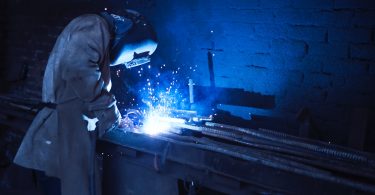Scientific and medical breakthroughs are becoming so amazing, that it’s hard to believe that they’re not straight out of a science fiction novel.
Scientific and medical breakthroughs are becoming so amazing, that it’s hard to believe that they’re not straight out of a science fiction novel. In the past week alone, it has been revealed that scientists have created the first artificial chromosome, grown the first ever living muscle in the lab, and trials have started with a new method of keeping patients alive in a state of “suspended animation.”
Researchers have built the artificial chromosome by stitching synthetic strands of DNA together in a sequence based on the known genome of brewer’s yeast. It has involved stitching together 273,871 individual nucleotide bases (the building blocks of DNA) of the yeast’s genes in the correct order, as well as removing around 50,000 repeating redundant sequences of the chromosome.
To give you an idea of how intricate it s to work with DNA, the diameter of a DNA molecule is about 2 nanometers across. A nanometer is one billionth of a meter and a single human hair is about 100,000 nanometers across. Over 500,000 changes were made to this new designer chromosome (named ‘synIII’) and the yeast survived through them all.
A small advancement towards a cure
Chromosomes may be tiny, but this research confirms that they are tough and can withstand a great deal of modification.
The design of artificial chromosomes could be vital in medicine for the production of drugs and vaccines. If the rate of yeast evolution is sped up, certain strains could be tailored for making difficult medicines. New yeast designs could also improve efficiency of producing alcohol-based biofuels through fermentation and aid the breakdown of pollutants in the environment.
The first lab grown muscle which was implanted onto the back on a mouse is allegedly as strong and self-healing as real muscle tissue. The strength and self-healing capacity were tested by biomedical engineers from Duke University in the US by forcing it to contract using electrical impulses and injecting it with a snake venom toxin. The muscle is ten times stronger than any previous attempts and is grown by using a pool of muscle stem cells as well as well-developed contractile muscles for them to live in.
Treatment via suspended animation
Scientists are still a long way from replacing damaged muscle tissue with an artificial substitute, as it is difficult to create an artificial vascular system that would feed the muscle with blood and to get hold of a large enough supply of human stem cells. However, the trials that are starting to duplicate this study with human muscle will be incredibly valuable for drugs testing.
For the first time ever, doctors are attempting to treat patients while they are neither dead nor alive in a state of “suspended animation.” It might sound like something out of Star Wars, but the hope is that by replacing the blood with a saline solution, surgeons will have more time to save the lives of patients with fatal injuries that would have previously bled to death.
The procedure is being tested and carried out by surgeons at the UPMC Presbyterian Hospital in Pittsburgh, and involves removing all the blood from a patient’s body and replacing it with a cold saline solution.
This slows cellular activity as it quickly cools the body down to temperatures as low as 10°C which is similar to inducing hypothermia. The patient is clinically dead while in this state as they do not breathe and they have no pulse or brain activity. However, if the theory is correct then the body should start up again when the temperature is slowly raised back to normal at 37°C, once the surgeons have had time to work.
Such a new and risky procedure is quite controversial, and can only be performed on patients that would be highly unlikely to survive under normal circumstances. The team have to perform the procedure on individuals that have been rushed from the emergency room, so there is no consent given by them or their families.
In 2002, this procedure of suspended animation was performed on pigs by Dr Hasam Alam. The animals were sedated before inducing a massive haemorrhage. The pigs’ hearts usually restarted on their own after they were treated and no loss of cognitive or physical function was reported.
The world of medicine is changing around us every day, and scientists are working on new ways to keep us alive when tragedy strikes, such as an accident or terminal illness. While many trials are in the very early stages, it’s not hard to imagine a world just a few years from now where our own organs are grown in laboratories, and catastrophes that people encounter every day are no longer death sentences.
Controversy and ethics aside, it’s an exciting time to be alive.
What do you think about these experiments? Have your say in the comments section below.








